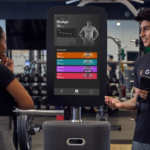In the ever-evolving world of technology, Samsung is taking a significant leap into the realm of robotics, specifically targeting a demographic that often gets overlooked: older adults. Their latest creation, the EX1 wearable robot, isn’t just another flashy tech prototype; it’s a real game changer in enhancing mobility and quality of life for seniors.
Unlike some tech giants that dabble in robotics more for show than practical application, Samsung has been notably prudent about its robotics endeavors. Remember Ballie, the cute spherical robot? While its future remains a bit hazy, Samsung’s focus has shifted to something more immediately impactful: the EX1 wearable robot.
The first glimpse of the EX1 was back at CES 2019, where it stood out among a trio of Samsung’s robotic innovations. What makes the EX1 particularly striking is its feasibility and functionality. Wearable exoskeletons aren’t new, but Samsung’s approach is. They even had functional units at CES, and I had the chance to experience firsthand how the EX1 assisted in walking, particularly up stairs.
This isn’t just a fancy gadget; it’s a part of a crucial and growing field of robotic age-tech. Developed in collaboration with Seoul-based Sahmyook University, the EX1 focuses on a vital aspect of aging – mobility. As we age, muscle mass diminishes, affecting balance, walking, and increasing fall risks. The EX1, a hip-worn device, is engineered to combat these challenges, enhancing balance and movement for older individuals.
Professor Wan-hee Lee of Sahmyook University, a leading researcher on the project, emphasizes the transformative impact of the EX1. “It’s not just about mobility; it’s about enhancing the quality of life for seniors,” he says. The EX1 allows users to engage in basic exercises like walking and fitness routines more effectively and safely.
The results are impressive. In a study, participants wearing the EX1 for 50 minutes a day, three times a week over a month, saw a 12% improvement in stride length and a 21% increase in propulsion. These numbers aren’t just statistics; they represent a significant leap towards independence and well-being for seniors.
Professor Lee’s vision goes beyond just this one product. “Our findings lay the groundwork for an array of improved and advanced wearable robots,” he notes. This innovation is expected to fuel further research and commercialization, expanding the global wearable robot market.
While there’s no set date for the EX1’s market debut, its potential is undeniable. The landscape of assistive wearable robotics, particularly for senior care, is poised for tremendous growth in the coming years. Samsung’s EX1 is at the forefront of this revolution, bringing hope and enhanced mobility to a generation that deserves the best of what technology has to offer.
In conclusion, the Samsung EX1 wearable robot is more than just a technological marvel; it’s a beacon of hope for improving elderly mobility and quality of life. With its promising test results and focus on practical application, the EX1 is set to redefine the role of robotics in elder care. It’s an exciting time in the tech world, as we step into a future where technology compassionately meets the needs of our aging population.











